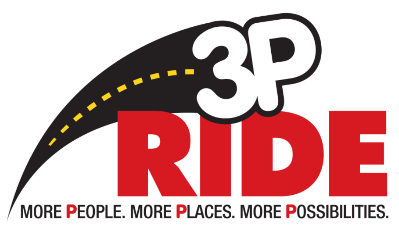Thanks to guest blogger, Sherry Welsh with 3P Ride in York, Pennsylvania, for preparing this post. This blog features highlights from their 2018 grant project whose goal was to identify and evaluate replicable programs or applications that work to match/connect individuals for mobility purposes, and test a process that aligns with the goals and needs of older adults and people with disabilities.
Project Overview
In the past two years, Central Pennsylvania Transportation Authority, through 3P Ride, its 501(c)3 nonprofit, has done extensive data collection related to the barriers that exist for riders trying to stay engaged in their community. With the NADTC Getting Ready to Innovate grant, our primary goal was to improve the after-hours and weekend connections that were identified by our users as problematic. We wanted to provide more on-demand, choice driven, accessible same day access to transportation at a cost that is feasible for our riders. We intended to do this by identifying and testing existing mobile applications that might support crowd sourcing for demand responsive transportation.
Further, we planned to identify and explore nationwide best practices that screen and match rider, driver, vehicle, and destination to connect individuals who wanted and/or needed specific transportation with drivers interested in sharing the ride. Based on our early findings, we would evaluate for usability and relevance for our community. In short, we wanted to expand our Community Transportation Toolbox with alternate mobility options through technology. More People, More Places, More Possibilities.
Project Accomplishments
The tasks began with the engagement of the key groups of the project, including our rider-run advocacy committees, the 3P Ride Partnership on which 3P Ride was founded, and the board of directors. To initiate the research component of the grant project, we conducted on-board rider surveys and six focus groups made up of older adults, persons with disabilities, our partnership, human service agencies, and individuals with a focus on technology were conducted. The goal of the survey and focus groups was to understand the current needs and to identify barriers that could prevent implementation of the project.
After reviewing various mobile apps, the project team identified and pilot tested applications that fit the requirements recognized by the rider surveys and focus groups. The two apps we tested were Uber and Care.com, which offered some, but not all of the components or features our survey groups identified as necessary for their purposes. This would mean that we would need to develop an application from scratch to include the necessary features.
Lessons, Successes and Limitations
The project, in terms of evaluation and innovation, has been successful from start to finish. The greatest barrier experienced was related to human resources. As we prepared to open the project, we were unable to secure a short-term individual with enough knowledge of the rabbittransit system, the transportation industry, and our initiatives to assist with this project as we had expected. To adapt, we reallocated the tasks of the project. The other barriers experienced relate to the next steps of the project. While we believe the type of technology solution identified in this project will provide a major benefit to our community, we learned that the costs to develop a technology application of this type, with the features needed in our local community, significantly exceeds the availability of funding at this time.
Sustainability: What are our carry on activities?
After learning more information about the next steps of implementation, specifically, the timeline and the cost, the group decided that our community would be best served by taking a different approach to moving the project forward. Instead of using one of the apps identified by the research project, we have been in contact with the Pennsylvania Department of Transportation to determine if they have an interest in developing such an app that would include the features that have been outlined in our research process. We look forward to the future and the possibility that the vision for this project becomes a reality as the transportation and technology landscapes advance rapidly in pursuit of human-centered mobility.
For more information contact Sherry Welsh at 717.849.0731 or swelsh@rabbittransit.org

Leave a Reply